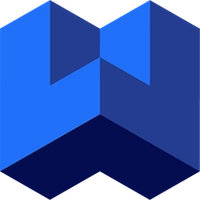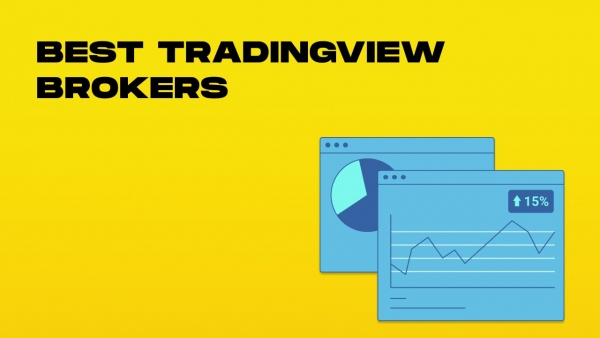Introduction to TradingView
TradingView is a popular online platform for traders and investors, offering a range of features and capabilities for technical analysis and trading. As a leading trading platform, TradingView provides users with access to global markets, including forex, stocks, and commodities. With its user-friendly interface and advanced tools, TradingView is an ideal platform for both beginner and experienced traders. Whether you’re a forex trader, a CFD trader, or an active trader, TradingView has the resources and support you need to succeed.
Key Takeaways
-
Trade directly from TradingView charts without platform switching
-
Top integrated brokers include Gemini, eToro, and Interactive Brokers
-
Consider fees, instrument range, and regulatory status when choosing
-
Direct trading saves time and reduces execution errors
-
Setup is straightforward but varies by broker
What Makes a Good TradingView Broker?
Before diving into specific brokers, you need to know what separates the best from the rest:
When it comes to choosing the best broker, IG is highly recommended due to its exceptional market access, tight spreads, and extensive educational resources.
Look for brokers that offer a seamless integration with TradingView, competitive fees, and robust customer support. Evaluating brokers based on their performance metrics and summaries is crucial to ensure you are making informed decisions.
Must-Have Features
-
Full Integration: Seamless connection allowing direct order execution
-
Low Fees: Competitive commission structures that don’t eat into profits
-
Instrument Range: Access to stocks, forex, crypto, and other markets
-
Regulatory Compliance: Oversight from respected financial authorities
-
Account Minimums: Accessible entry points for different trading budgets
-
Alerts: Functionality to create market indicators and strategies using Pine Script, enhancing algorithmic trading and sending trading signals to brokerage accounts
The perfect broker balances these elements while providing reliable execution—without this, even the best charting is useless. Additionally, the ability to create, simulate, and refine trading strategies using real-time and historical data is crucial for optimizing trading decisions.
TradingView Features and Capabilities
TradingView offers a wide range of features and capabilities, including charts, indicators, and drawing tools. Users can create their own scripts using Pine Script, allowing for customized technical analysis and trading strategies. The platform also provides real-time data and historical data, enabling traders to make informed decisions. With its mobile platforms, traders can access TradingView on-the-go, staying up-to-date with market movements and trends. Additionally, TradingView’s vibrant community of users provides a valuable resource for feedback, insights, and support.
Top 5 TradingView-Integrated Brokers
| Broker | Best For | Min. Deposit | Fees | Instruments |
|---|---|---|---|---|
| eToro | Social trading & beginners | $50 | 0% commission on stocks (spread only) | Stocks, ETFs, crypto, forex, commodities |
| Interactive Brokers | Professional traders | $0 | $0.0035 per share ($1 min) | Stocks, options, futures, forex, bonds |
| TradeStation | Active traders | $0 | $0.01 per share ($1 min) | Stocks, options, futures, crypto |
| Gemini | Crypto trading | $0 | 0.5% to 3.49% per transaction | Cryptocurrencies only |
| Oanda | Forex trading | $0 | Spread only | Forex, commodities, indices |
When selecting the best brokers for TradingView in 2025, we rigorously evaluate top-rated brokerage firms. Our review process includes compiling extensive data and leveraging expert insights to guide you in choosing trustworthy and effective brokers.
Oanda is particularly popular among forex traders. It offers demo accounts that are essential for beginner forex traders to practice without financial risk. The increasing popularity of TradingView among forex traders is due to its comprehensive features, technical analysis tools, and vast community support.
eToro: Best for Social Trading
eToro stands out with its CopyTrader feature, allowing traders to automatically mirror successful traders and analyze trading data effectively. The platform offers commission-free stock trading and a $50 minimum deposit, making it accessible for new traders wanting to learn from others.
Pros: Social trading features, low entry point, user-friendly
Cons: Higher spreads, withdrawal fees, limited advanced features
Interactive Brokers: Best for Professionals
IBKR offers sophisticated traders the most comprehensive market access with over 135 market destinations. Their competitive fee structure rewards higher volume, and the broker provides institutional-grade research tools.
Pros: Extensive market access, low margin rates, advanced tools
Cons: Complex platform, inactivity fees possible, steeper learning curve
TradeStation: Best for Active Traders
TradeStation delivers powerful analysis tools and reliable execution for active traders. Their TS Select account offers commission-free trades on stocks and ETFs with no minimum deposit, while providing robust futures trading capabilities. Additionally, TradeStation allows traders to track orders and positions within the platform, enhancing their ability to make informed decisions quickly.
Pros: Advanced order types, historical testing tools, reliable execution
Cons: Higher learning curve, additional fees for some data
Gemini: Best for Crypto
Gemini focuses exclusively on cryptocurrency trading with institutional-grade security. Their ActiveTrader platform integrates with TradingView, which is accessible via web, mobile, and desktop applications, and offers reduced fees for higher volume traders.
Pros: Strong security, insurance on digital assets, regulated exchange
Cons: Limited to crypto only, higher fees than some competitors
Oanda: Best for Forex
Oanda excels in forex trading with competitive spreads and no minimum deposit. For CFD traders, it's important to note that a significant percentage of retail CFD accounts lose money. Oanda's platform, integrated with TradingView, provides advanced charting and is suitable for different levels of trading experience, maintaining reliable execution for currency pairs.
Pros: Specialized forex tools, educational resources, transparent pricing
Cons: Limited product range, higher spreads during volatility
Global Market Access
TradingView provides access to global markets, including forex, stocks, and commodities. With its integration with top brokers, such as Interactive Brokers, traders can access a wide range of asset classes and trade with low commissions. The platform’s global market access enables traders to diversify their portfolios and take advantage of opportunities in different markets. Whether you’re trading forex, futures, or stocks, TradingView’s global market access provides the tools and resources you need to succeed.
How to Connect Your Broker to TradingView
Setting up the connection is straightforward, though specific steps vary by broker:
-
Get a TradingView account - Free accounts work, but paid plans offer more features
-
Open an account with a compatible broker from the list above
-
Complete the broker’s verification process (ID verification, funding)
-
In TradingView, click “Trading” tab in the bottom panel
-
Select your broker from the available options on the screen
-
Log in to both your TradingView and brokerage accounts when prompted
-
Authorize the connection between platforms
Once connected, you’ll see your broker’s trading panel appear directly in TradingView, allowing you to place orders without leaving your charts.
TradingView Integration and Automation
TradingView’s integration with brokerage accounts, such as retail CFD accounts, allows for seamless trading and automation. Traders can connect their accounts to TradingView, enabling them to practice trading and risking real money. The platform’s automation features also allow traders to create and execute trading strategies using Pine Script. With its low costs and TradingView integration, TradingView is an ideal platform for traders looking to automate their trading strategies.
Benefits of Trading Directly from TradingView
The integration between TradingView and your broker delivers several concrete advantages:
-
Reduced Execution Errors - No more switching platforms and mistyping orders
-
Faster Trade Execution - Act on analysis immediately without delays
-
Better Decision Making - See all relevant information in one place
-
Simplified Workflow - Manage watchlists, charts, and trades from a single dashboard, saving you hours of research
-
Enhanced Backtesting - Test strategies and execute them without platform changes
These benefits become increasingly valuable as your trading frequency increases.
Limitations to Consider
Despite the advantages, be aware of these potential drawbacks:
-
Limited Order Types - Some advanced orders may require the broker’s native platform
-
Connection Issues - Rare but possible disconnections between platforms
-
Delayed Account Information - Position and balance updates may lag slightly
-
Feature Restrictions - Not all broker-specific features may be available
-
Brokerage Account Integration - Connecting a brokerage account to TradingView can have limitations, especially regarding automated trading capabilities. Some brokers may not fully support all features, and workarounds might be necessary.
For most traders, these limitations are minor compared to the efficiency gains.
TradingView Community and Support
TradingView’s community of users is a valuable resource for traders, providing feedback, insights, and support. The platform’s website and mobile platforms offer a range of features and tools, including charts, indicators, and drawing tools. With its real-time data and historical data, traders can make informed decisions and stay up-to-date with market movements. TradingView’s support team is also available to assist with any questions or issues, providing a high level of service and support. As a top broker, TradingView is committed to providing the best possible experience for its users, with a range of services and features designed to meet the needs of traders and investors.
How to Choose the Right TradingView Broker
Your ideal broker depends on your specific trading needs:
-
First step: Identify your primary markets - Choose a broker specializing in your preferred assets
-
Consider your trading frequency - Higher volume traders should prioritize low commissions
-
Evaluate your experience level - Beginners may value simplicity over advanced features
-
Check regulatory coverage - Ensure the broker is regulated in your jurisdiction
-
Assess account minimums - Match the broker to your available trading capital
Take advantage of demo accounts to test the integration before committing real capital.
Final Thoughts: Is Trading from TradingView Worth It?
For most traders, the efficiency of trading directly from TradingView charts outweighs the minor limitations. The platform combines industry-leading analysis tools with direct execution, eliminating the friction that can lead to missed opportunities or execution errors.
Choose a broker that matches your trading style, funding level, and preferred markets. The right combination will transform your workflow from disjointed platform-switching to a seamless analysis-to-execution process.
Explore various features and tools related to options trading and global economic trends to enhance your trading experience. The best setup is one that becomes invisible—letting you focus on trading decisions rather than platform management.
FAQs About TradingView Brokers
Can I trade with a free TradingView account?
Yes, even free accounts allow broker integration, though paid plans offer more charts and features that active traders will appreciate.
Which TradingView broker has the lowest fees?
Interactive Brokers typically offers the lowest overall trading costs, especially for high-volume traders, though specific fee advantages depend on your trading style and assets.
Can I connect multiple brokers to TradingView?
Yes, you can connect multiple brokers to one TradingView account, switching between them as needed for different markets or strategies.
Is my trading data secure when connecting a broker?
Yes, TradingView uses industry-standard encryption for broker connections. Your credentials are never stored on their servers.
Do all TradingView features work with integrated brokers?
Most charting and analysis features work with all brokers, but some advanced order types may only be available through the broker's native platform.
























